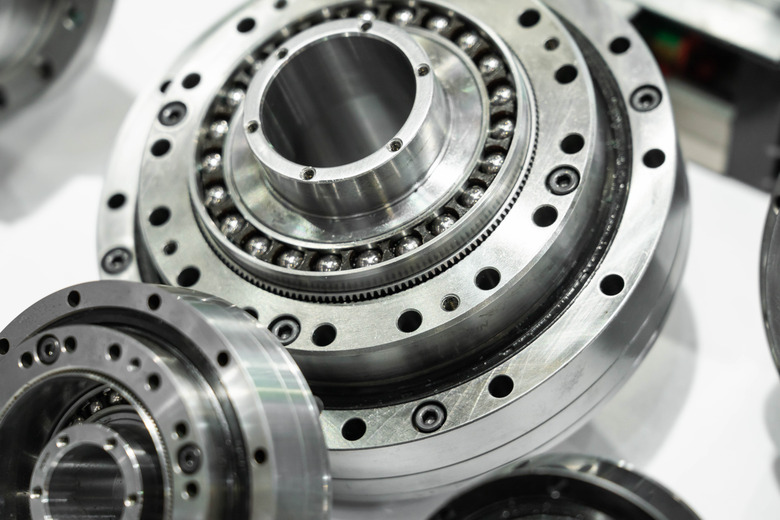How To Calculate Bearing Size
Determine the size of a replacement ball bearing before heading to the store or placing an order to avoid wasting money and time. Typically, cylindrical-shaped ball bearings contain a set of balls that allow the outer casing to spin freely. Ball bearings come in many sizes for an array of equipment, from skateboard wheels to industrial equipment. The size of a bearing is calculated by finding its relevant dimensions in millimeters.
Step 1
Measure the thickness of the old bearing, as viewed from its edge, in millimeters. This ensures that the bearing fits into the circular hole in the equipment.
Step 2
Measure the diameter of the central hole in the bearing in millimeters to be sure that the bearing fits on the axle of the device you will use it with. The diameter is the width of a circle, measured on a line that passes through its center.
Step 3
Determine the total diameter of the bearing in millimeters.
References
- NTN: Ball Bearings
- Physics for Scientists and Engineers With Modern Physics"; Raymond A. Serway and John W. Jewett; 2009
- Wolfram MathWorld: Diameter
Cite This Article
MLA
Hirsch, William. "How To Calculate Bearing Size" sciencing.com, https://www.sciencing.com/calculate-bearing-size-7827772/. 21 January 2011.
APA
Hirsch, William. (2011, January 21). How To Calculate Bearing Size. sciencing.com. Retrieved from https://www.sciencing.com/calculate-bearing-size-7827772/
Chicago
Hirsch, William. How To Calculate Bearing Size last modified March 24, 2022. https://www.sciencing.com/calculate-bearing-size-7827772/
